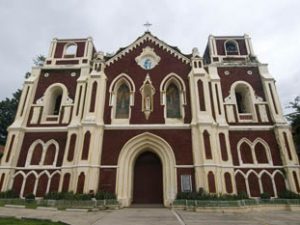The World Heritage sites in the Philippines confirm the abundance of nature in the country and illustrate how Filipino creativity blossomed into a unique national architectural style. While the natural properties record stages in the evolution of the world, the cultural heritage records progression of man’s ideas in terms of the built environment. So, head to the Philippines for a perfect mix of leisure and heritage travel. Historic City of Vigan Vigan, Ilocos Sur During the height of the Spanish colonial era in the 18th and 19th centuries, Vigan or Ciudad Fernandina de Vigan was the third most important city after Manila and Cebu. It was the centre of Spanish colonial power in northern Luzon. The range of structures along the plazas and streets reveals the story of the town, a living testament to the Spanish colonial era and a place that exerts a strong cultural influence to the modern Philippine nation. Notable Vigan urban spaces and architecture include its town plaza, Plaza Salcedo; Saint Paul’s Cathedral; The Arzopispado; Saint Paul’s College; the Provincial Capitol Building; Simbaan a Bassit (Catholic Cemetery Chapel); Calle Crisologo; Burgos Museum; and the numerous Vigan Houses. Church of San Agustin Paoay, Ilocos Norte The San Agustin Church in Paoay began its construction in 1604 and finally completed in 1710. This is one of the most outstanding ‘earthquake baroque’ structures in the Philippines, where the primary concern was to design the church for earthquake protection. The most outstanding feature of the church is the phalanx of buttresses that jut out perpendicularly from the sides to strengthen the walls against earthquake damage. It has the most massive buttressing in any church in the Philippines. The visual impact …
Read More »
Breaking News
- 41st IATO Convention will be in Vishakapatnam in August-September 2026
- TravelBullz’ Great India Roadshow concludes in Delhi with launch of ‘Destination Dubai’
- UP bets on rural tourism, 234 villages to power experiential travel
- InfoComm India 2025 unveils tech solutions shaping travel and hospitality experiences
- Disney Cruise Line unveils over 20 dining and lounge venues onboard Disney Adventure
- Governments and businesses must recognise that nature-based solutions are critical for thriving local economies also: Expedia VP
- ClickMyCruise now representing MSC Cruises in India in addition to Costa Crociere
- Partnerships and relationships are keys in India’s travel market, stresses Tekla Maira
- Rationalisation tourism GST to aid India’sglobal competitiveness: FHRAI urges FM
- India ahead of Japan, US in terms of railway electrification and towards greener future: Kant
- Finland–India tourism workshop 2025 showcases unique experiences for Indian luxury travellers
 Tourism Breaking News
Tourism Breaking News
